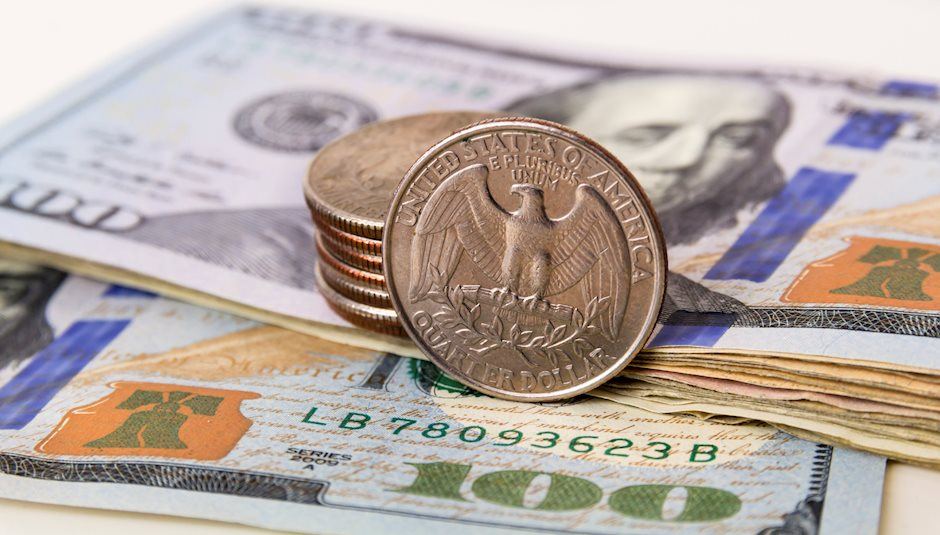US Dollar rises near monthly highs ahead of Fed decision
- US Dollar is gaining traction, and the DXY index surged to a daily high of 106.85.
- The two-day Fed meeting ends on Wednesday with a monetary policy decision.
- Mid-tier economic figures from the US came in mixed.
- US Treasury yields retreat, which may limit the USD’s momentum.

The US Dollar (USD) is up on Tuesday, with the DXY index rising to a daily high around 106.85, near the monthly high struck last Thursday of 106.90 and then settled at 106.70. A cautious market mood ahead of Wednesday's Federal Reserve (Fed) decision and positive mid-tier economic figures where the main factors which strengthened the Greenback The escalating conflict between Israel and the Hamas group also contributed to a sour market mood.
In defiance of the Federal Reserve’s (Fed) tightening measures, the United States economy showed remarkable resilience, which allowed the Greenback to gain traction. Despite this, the possibility of a 25-basis-point hike in December, as per the CME FedWatch Tool, continues to be low, limiting any upward movement of the USD. That being said, the policy statement and Fed Chair Jerome Powell’s words may provide further clues on forward guidance for investors to continue modelling their expectations for the next meeting.
Daily Digest Market Movers: US Dollar gained traction amid positive Housing and Confidence data, eyes on Fed
- The US DXY Index jumped to 106.70 after bottoming at a daily low below 106.00.
- The US Conference Board Consumer Confidence Index from October beat expectations, coming in at 102.6 vs the 100.5 expected.
- The S&P Dow Jones Indices reported that the S&P/Case-Shiller Home Price from August exceeded expectations. It came in at 2.2% YoY vs the expected 1.6% and increased in relation to its last reading of 0.2%.
- On the negative side, the Chicago PMI from October came in at 44, below the expected 45 consensus and declined from its previous reading of 44.1.
- Meanwhile, US government bond yields are mixed with the 2, 5 and 10-year yields standing at 5.07%,4.81% and 4.86%, respectively, which could limit the USD’s momentum.
- For Wednesday, according to the CME FedWatch Tool, a pause in November is nearly priced in, while the odds of a 25-basis-point hike in December are still low near 20%.
Technical Analysis: US Dollar Index jumps back above 20-day SMA, momentum still limited
According to the daily chart, the technical outlook for the DXY Index remains neutral to bearish as the bulls show signs of exhaustion. The Relative Strength Index (RSI) points toward a potential reversal, as its positive slope above the midline weakens, while the Moving Average Convergence Divergence (MACD) histogram presents red bars.
As long as the index remains above the 20, 100 and 200-day Simple Moving Averages (SMAs), the outlook on the broader scale will favour bulls, but buyers will probably have a hard time defending the 20-day SMA as momentum weakens.
Supports: 106.30 (20-day SMA), 106.00, 105.70.
Resistances: 106.80, 107.00, 107.30.
Interest rates FAQs
What are interest rates?
Interest rates are charged by financial institutions on loans to borrowers and are paid as interest to savers and depositors. They are influenced by base lending rates, which are set by central banks in response to changes in the economy. Central banks normally have a mandate to ensure price stability, which in most cases means targeting a core inflation rate of around 2%.
If inflation falls below target the central bank may cut base lending rates, with a view to stimulating lending and boosting the economy. If inflation rises substantially above 2% it normally results in the central bank raising base lending rates in an attempt to lower inflation.
How do interest rates impact currencies?
Higher interest rates generally help strengthen a country’s currency as they make it a more attractive place for global investors to park their money.
How do interest rates influence the price of Gold?
Higher interest rates overall weigh on the price of Gold because they increase the opportunity cost of holding Gold instead of investing in an interest-bearing asset or placing cash in the bank.
If interest rates are high that usually pushes up the price of the US Dollar (USD), and since Gold is priced in Dollars, this has the effect of lowering the price of Gold.
What is the Fed Funds rate?
The Fed funds rate is the overnight rate at which US banks lend to each other. It is the oft-quoted headline rate set by the Federal Reserve at its FOMC meetings. It is set as a range, for example 4.75%-5.00%, though the upper limit (in that case 5.00%) is the quoted figure.
Market expectations for future Fed funds rate are tracked by the CME FedWatch tool, which shapes how many financial markets behave in anticipation of future Federal Reserve monetary policy decisions.
Author

Patricio Martín
FXStreet
Patricio is an economist from Argentina passionate about global finance and understanding the daily movements of the markets.

















